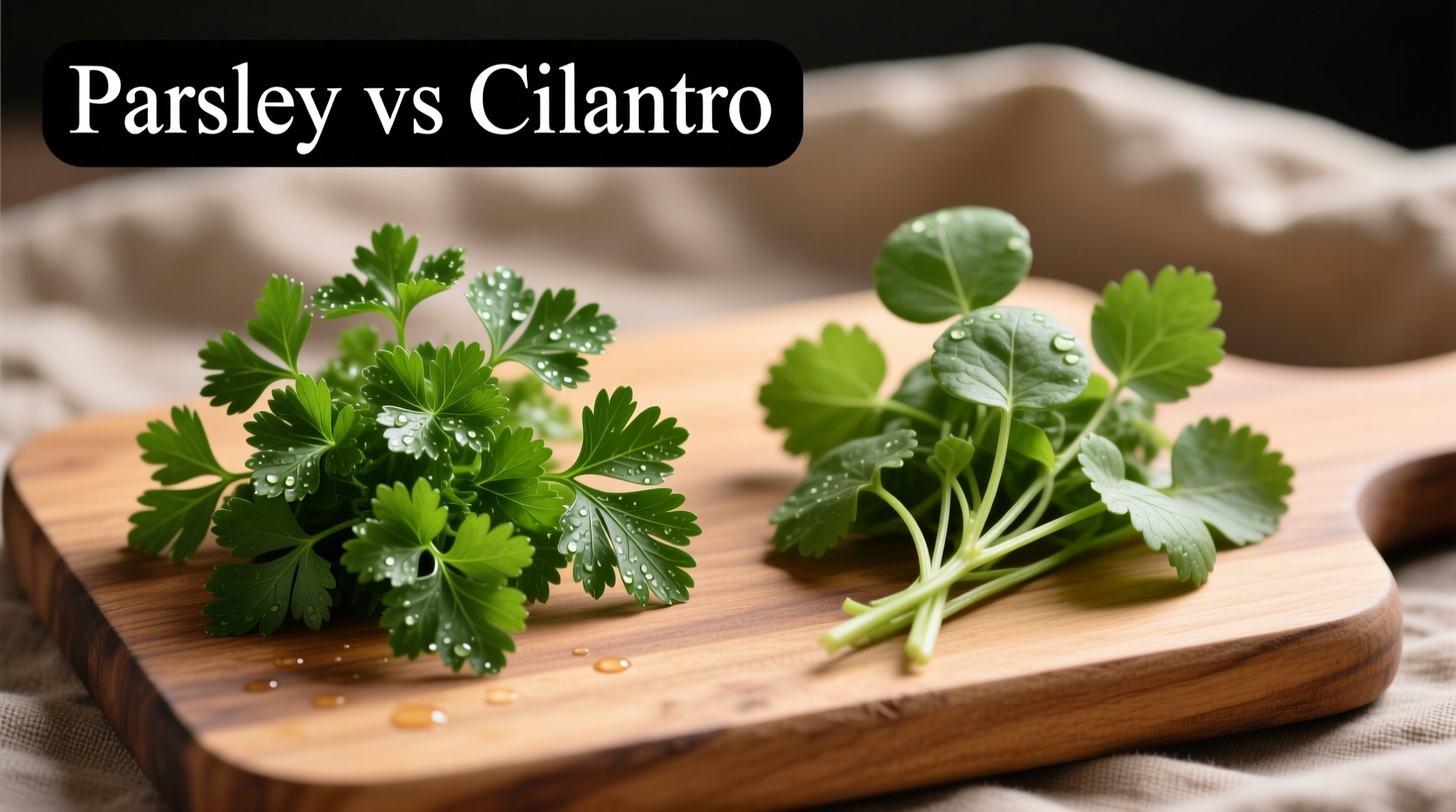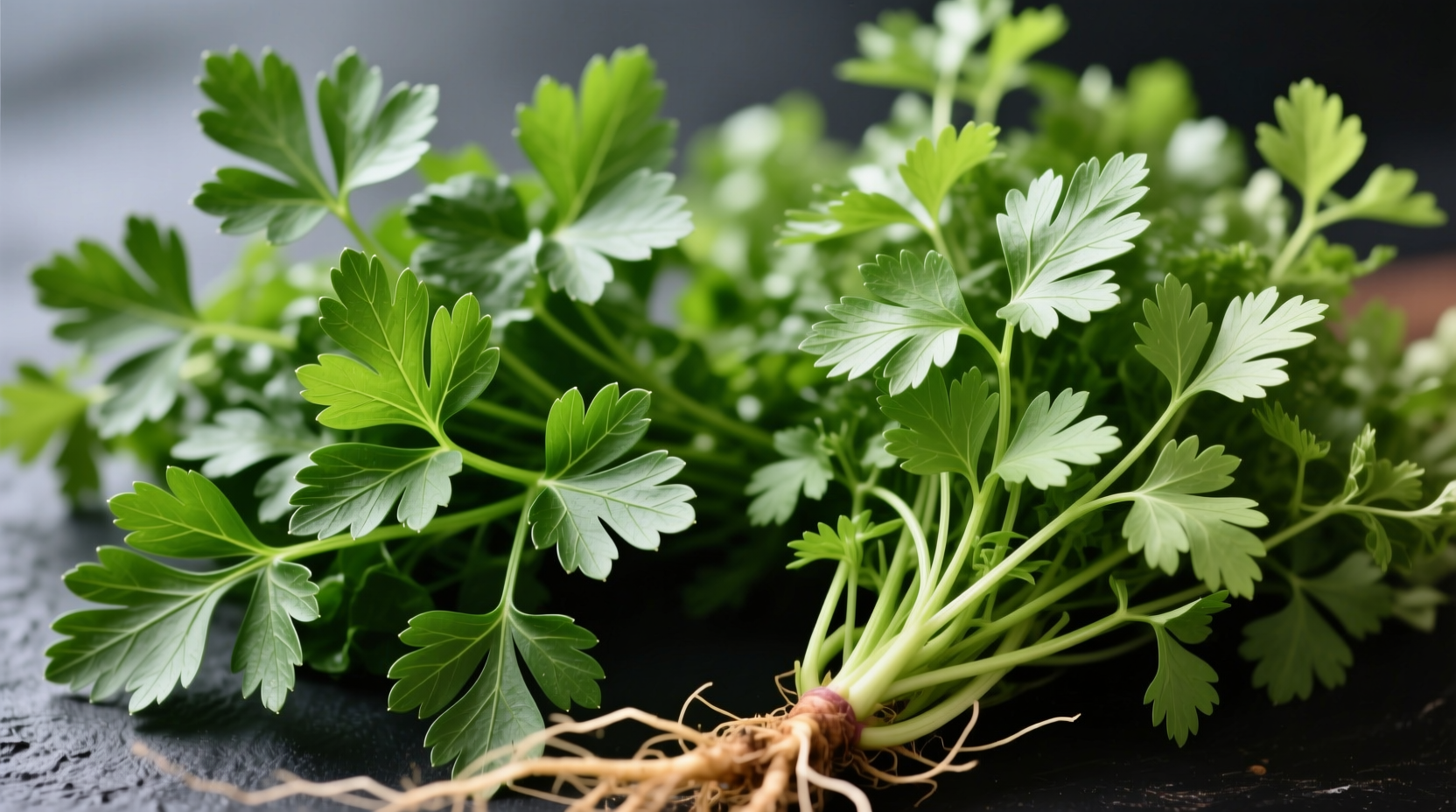No, parsley and cilantro are not the same herb. While they share visual similarities that cause frequent confusion, these two culinary staples have distinct botanical classifications, flavor profiles, and culinary applications. This guide provides clear identification tips, usage recommendations, and scientific insights to help you confidently distinguish between parsley and cilantro in your cooking.
Why People Confuse Parsley and Cilantro
Many home cooks and even experienced chefs occasionally mix up parsley and cilantro. This confusion stems from their similar leaf structures and common placement in grocery store produce sections. However, understanding the key differences prevents recipe disasters and enhances your culinary precision.
Botanical Background: Not Just Different Names
Parsley (Petroselinum crispum) belongs to the Apiaceae family but is in a different genus than cilantro. Cilantro (Coriandrum sativum), also known as Chinese parsley or coriander leaf, shares the same plant family but represents a completely different species. This botanical distinction explains their divergent flavor compounds and growth characteristics.
Visual Identification Guide
Learning to distinguish these herbs by sight prevents kitchen mishaps. Examine these key visual characteristics:
| Feature | Parsley | Cilantro |
|---|---|---|
| Leaf Shape | Curled or flat with pointed tips (serrated edges) | More rounded, lacy appearance with smoother edges |
| Leaf Texture | Thicker, more rigid leaves | Softer, more delicate texture |
| Stem Color | Lighter green to yellowish | Darker green, sometimes with purple hints |
| Overall Appearance | More structured, upright growth | Looser, more sprawling growth pattern |

Flavor Profile Comparison
The most significant difference lies in their flavor profiles:
- Parsley: Offers a mild, slightly peppery, grassy flavor with subtle bitterness. Curly parsley has a more pronounced flavor than Italian flat-leaf varieties.
- Cilantro: Delivers a bright, citrusy flavor with distinctive soapy notes that some people genetically perceive due to OR6A2 gene variations (affecting approximately 21% of the population according to National Institutes of Health research).
Culinary Applications: When to Use Which
Understanding proper usage prevents flavor imbalances in your dishes:
Parsley's Best Uses
- As a garnish for Mediterranean and European dishes
- In tabbouleh, chimichurri, and gremolata
- With fish, potatoes, and roasted vegetables
- When you want subtle herbal notes without overpowering other ingredients
Cilantro's Best Uses
- Essential in Latin American, Southeast Asian, and Indian cuisines
- In salsas, guacamole, and ceviche
- With spicy dishes where its citrus notes balance heat
- When recipes specifically call for "fresh coriander" (common in British English)
Nutritional Differences Worth Noting
Both herbs offer nutritional benefits, but with different strengths. According to USDA FoodData Central, a quarter cup of each provides:
- Parsley: Higher in vitamin K (547% of daily value), vitamin C (13% DV), and folate
- Cilantro: Richer in antioxidants like quercetin and kaempferol, with slightly more vitamin A
Regional Naming Confusion Explained
The terminology varies significantly by region, adding to the confusion:
- In North America, cilantro refers to the leaves/stems, while coriander means the seeds
- Throughout most of the English-speaking world outside North America, the entire plant is called coriander
- Chinese parsley is a common alternative name for cilantro in Asian markets
Practical Tips for Confident Identification
Use these field-tested methods when you're uncertain:
- Smell test: Crush a leaf between your fingers. Cilantro emits a distinctive citrus aroma, while parsley smells more grassy and mild.
- Taste test: Place a small piece on your tongue. Cilantro's citrus notes are immediately apparent, while parsley offers earthier flavors.
- Leaf examination: Look at the leaf edges under good light. Parsley has more pronounced serrations resembling tiny teeth.
- Stem check: Cilantro stems tend to be more hollow and flexible than parsley's sturdier stems.
Substitution Guidance: When You've Got the Wrong Herb
If you've accidentally purchased the wrong herb, consider these alternatives:
- Replacing cilantro: Use a combination of parsley and a squeeze of lime juice, or try culantro (a different but similar-tasting herb)
- Replacing parsley: Try chervil or a small amount of celery leaves for similar mild flavor profiles
- Important note: Never substitute one for the other in traditional recipes where the specific herb defines the dish's character
Storage Techniques for Maximum Freshness
Both herbs require proper storage to maintain quality:
- Treat both like cut flowers: Trim stems and place in water
- Cover loosely with a plastic bag in the refrigerator
- Cilantro typically lasts 7-10 days, while parsley often remains fresh for 10-14 days
- Freeze chopped herbs in olive oil for long-term storage
Common Recipe Mistakes to Avoid
Understanding these pitfalls prevents culinary disasters:
- Using cilantro in place of parsley in French fines herbes blend
- Substituting parsley for cilantro in authentic salsa verde
- Adding cilantro to dishes requiring long cooking times (its flavor diminishes rapidly with heat)
- Using dried cilantro as a substitute for fresh (drying destroys its distinctive flavor)
Frequently Asked Questions
Can I substitute parsley for cilantro in guacamole?
No, parsley lacks the citrus notes essential to authentic guacamole. If you dislike cilantro's flavor, omit it entirely rather than substituting parsley, which creates an unbalanced flavor profile.
Why does cilantro taste like soap to some people?
Approximately 21% of people possess a genetic variation (OR6A2 gene) that causes them to perceive specific aldehydes in cilantro as soapy. This genetic trait is more common among people of European and African ancestry than among those of Latin American or Asian descent.
Is there a visual difference between curly and flat-leaf parsley?
Yes, curly parsley has ruffled, crinkled leaves with a stronger flavor, while flat-leaf (Italian) parsley has smoother, broader leaves with more delicate flavor preferred by chefs for its easier chopping and more consistent flavor.
Can you grow cilantro and parsley together in the same container?
Yes, but they have different growing requirements. Parsley prefers slightly cooler temperatures and more moisture, while cilantro bolts quickly in heat. Plant them together only if you can provide partial shade and consistent watering, but expect cilantro to flower and go to seed faster than parsley.
Do parsley and cilantro come from the same plant?
No, they come from completely different plants. Parsley (Petroselinum crispum) and cilantro/coriander (Coriandrum sativum) belong to the same plant family (Apiaceae) but are different species with distinct growth patterns, flavors, and culinary uses.











 浙公网安备
33010002000092号
浙公网安备
33010002000092号 浙B2-20120091-4
浙B2-20120091-4